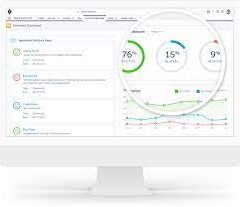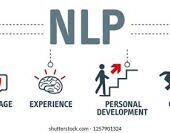Understanding the intricacies of Salesforce and using it effectively to support business processes is crucial for admins and developers. However, the significance of communication skills is often overlooked in technical training. Beyond technical expertise, vital non-technical skills, such as active listening and extracting relevant information from business stakeholders, play a pivotal role in addressing Salesforce users’ true needs. Here is an approach that enables working more efficiently in a proactive mode rather than reactive.
Once you identify your key salesforce stakeholders, here are some great ways to keep the doorways of communication open.
Start by putting yourself in your stakeholders’ shoes, be it business users, customers, or consulting clients. Transitioning into Salesforce there is a need to gather information, empathize, and build a compelling case for change.
Following are insights and strategies for effectively collaborating with stakeholders to understand business requirements, pain points, and objectives. If you’re keen on enhancing these skills, read on!
Importance of Stakeholders
As a Salesforce Administrator, collecting information from diverse stakeholders with varying knowledge levels is inevitable. It’s essential to recognize that the required information may not be thoroughly documented or held by a single individual. Engaging with individuals beyond primary users, such as those in supply chain and training, broadens the understanding of business processes. Maximizing the value of every interaction is crucial, considering the time constraints of both yourself and stakeholders.
Determining Stakeholder Numbers
The number of stakeholders to engage with depends on the project’s scope. Successful benchmarks have demonstrated varying needs:
- A 3-month discovery across a global procurement organization involved 40 hour-long interviews.
- A 6-month supply chain improvement project for a national retailer required roughly 10 conversations.
- A 3-month project sprint with approximately five conversations, resulting in 45 minutes of interviews.
Identifying Stakeholder Groups
Consider speaking with stakeholders in four directions: upwards, downwards, inside, and outside. Each group includes:
- Upwards: Approving authorities, such as project executive sponsors.
- Downwards: Individuals impacted by changes.
- Inside: Users operating new systems.
- Outside: Customers serviced by processes (external or internal).
The 3 Types of Stakeholders to Involve
- Change Advocates: Those advocating for change, providing ideas and innovation.
- Status Quo Defendants: Those defending the status quo, highlighting obstacles to overcome.
- The Keystone: A go-to person with comprehensive knowledge, serving as a powerful advocate for change.
Locating Stakeholders
Establishing a network within the organization is beneficial. For newcomers or consultants, navigating the terrain may be challenging. Start with the project sponsor for direction and inquire about additional contacts after each conversation.
Preparation and Respecting Stakeholders’ Time
Request meetings based on stakeholders’ availability, typically ranging from 15 to 45 minutes. Allocate an hour in your calendar to accommodate potential extensions. Prepare thoroughly, understanding whom you’re speaking to and having insights into the discussed system or process.

Leaving the Door Open: Saying Thank You
Upon closing a meeting, express gratitude and leave the door open for future conversations. Encourage stakeholders to contact you if they have further thoughts, and reciprocate by offering to send a quick note if additional insights emerge. Send a follow-up email expressing thanks and summarizing key takeaways.
Incorporating these practices ensures effective communication with stakeholders, facilitating a more successful and collaborative Salesforce implementation.













